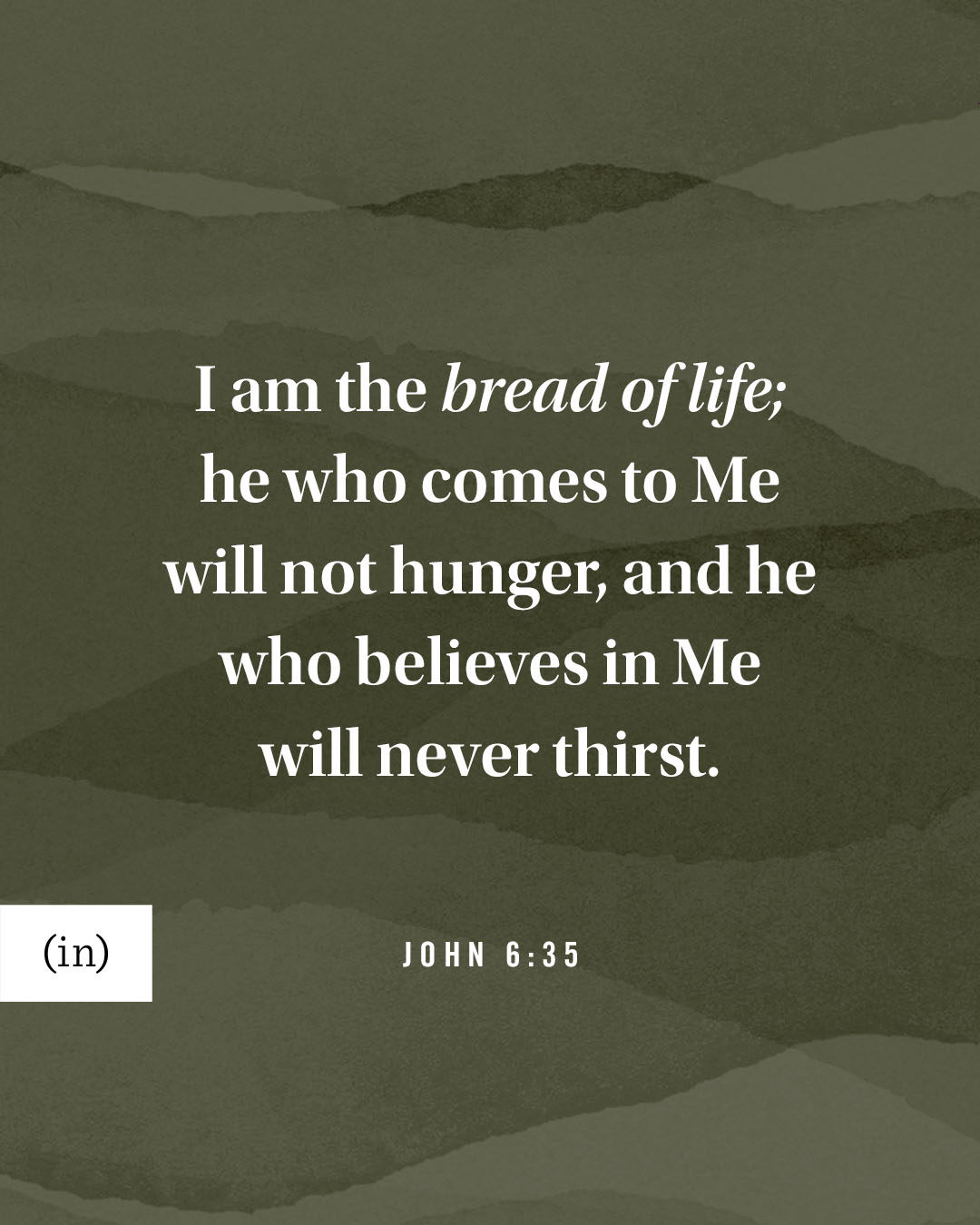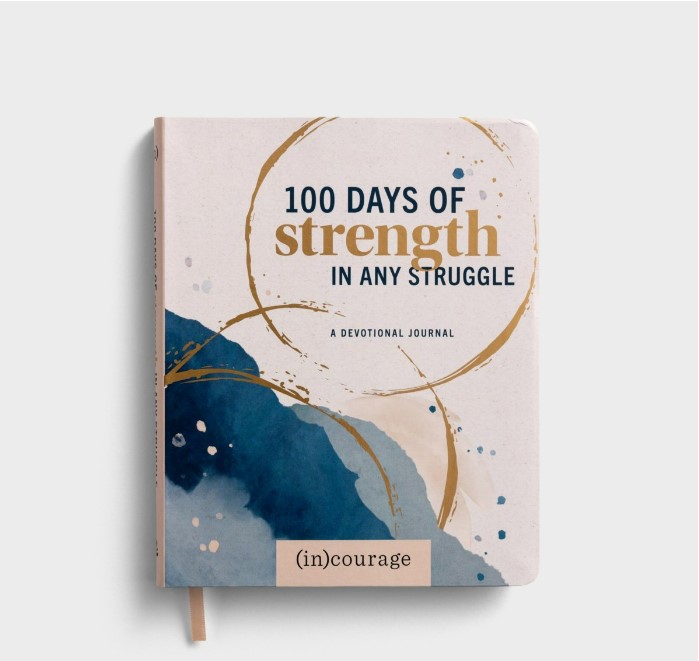The miracle of sourdough bread begins with five simple ingredients: flour, water, salt, starter, and a generous cup of patience.
I didn’t know if I had the patience to make this specialty bread. My friend offered me some sourdough starter and explained the process one Sunday afternoon. I hesitated.
Did I really have the bandwidth to feed a new baby daily? Was this one more thing to add to my already mile-long to-do list?
During the pandemic, I watched as the sourdough trend spread and grew, like yeast working its way through dough in a warm kitchen. In those days, taking on a new hobby that required days of attention was not something I welcomed. I felt like I was teetering on the edge of overload and anxiety.
Little did I know that sourdough might just be the thing to save me in a different season and send me straight back to the Savior.
I set my glass bowl on the flat kitchen scale. This scale helps me measure ingredients with precision rather than with uneven measuring cups and spoons. I start with 100 grams of the bubbly sourdough starter my daughter cleverly named Martha.
Martha sits on our kitchen counter in a large mason jar doing good work. I feed her daily with equal parts bread flour and water. The wooden spoon swirls vigorously until the starter shows the consistency of smooth pancake batter. Then I let her sit and grow. A wide, green rubber band, like a belt around the belly of the jar, helps mark how much Martha expands after each feeding.
Growing and harvesting yeast is like a science experiment in motion. Wild yeast is a single-celled fungus that feeds on sugars and starches and converts them into carbon dioxide. The carbon dioxide creates bubbles, which instigate the rise in bread dough.
To be clear, I’m a cook by nature, not a baker. I work more naturally by feel, smell, and taste. Concocting savory sauces and simmering soups, which employ the palate over precision, is much more my comfort zone. Surprisingly, sourdough bread making has provided an intriguing challenge and new spiritual rhythm for me.
I pour the warm water into the bowl. When bits of starter float, it’s a sign Martha is active and ready for action. Then I measure the flour and sprinkle 10 grams of sea salt on top. I mix and knead the ingredients until they form a ragged, dry dough.
Bread is first mentioned in Scripture back in Genesis 3:19 (NASB) as part of the curse:
“By the sweat of your face
You will eat bread,
Till you return to the ground,
Because from it you were taken;
For you are dust,
And to dust you shall return.”
The Hebrew word used in this passage for bread is “lehem,” sometimes translated more generically as food. These words are delivered to Adam after he and Eve ate the forbidden fruit from the Tree of Life. Even here in the midst of consequences, God is serving up a slice of grace. Bread will require work to prepare, but it will also serve as food, a sign of nourishment for all humankind.
Bread becomes a sign of God’s provision in Exodus 16:4 when the Israelites are in the wilderness complaining of hunger. God tells Moses: “Behold, I will rain bread from heaven for you; and the people shall go out and gather a day’s portion every day…” (NASB). God chooses to provide daily bread for the people, which serves as evidence of His glory and compassionate provision.
While the ingredients rest in my bowl, they come together in a miraculous way. I return after 30 minutes to a dough that is smooth and stretchy, no longer ragged. I stretch and fold the dough before setting it aside to proof. In many ways, this mirrors what happens in my heart when I take time to rest and abide with God. My ragged fears and frustrations begin to settle and smooth as my heart is hydrated by Living Water.
In the New Testament, Jesus uses bread as a sign of God’s multiplication. He performs a miracle in John 6, where He multiplies a boy’s lunch of five small loaves of bread and two fish. Jesus takes the loaves, gives thanks to His Father, and distributes the food to a hungry crowd of more than 5,000 people. Then Jesus sends His disciples to gather the leftovers and witness the miracle. They gathered 12 baskets (John 6:13 ). When the people saw the leftovers, they believed Jesus was the Prophet they had been waiting for.
In John 6:35, Jesus simply, but profoundly, declares, “I am the bread of life; he who comes to Me will not hunger, and he who believes in Me will never thirst” (NASB).
Through Holy Week, we remember how Jesus suffered and sacrificed, how his body was scored and hung on a cross. There is darkness in the tomb for a somber Good Friday and Silent Saturday, but then on Easter Sunday, the Bread of Life embodies the miracle and rises again!
Some days, the headlines weigh heavy on my heart, and the chaos of our world feels insurmountable. And I return to the liturgy of making bread, which beckons me to stretch and fold, knead and kneel, to taste and see the Master Baker at work. I sink my teeth into a slice of homemade sourdough slathered with butter and remember the miracle anew.
Dorina shares her passion for food, books, and travel in her weekly Glorygram and daily on Instagram.







What a great tangible connection from food to faith, Dorina! I love your daughter’s cleverness naming her Martha too. Blessings (((0)))
Ruth, I’m glad this one resonated with you! I smile every time I feed Martha or put her to work!
I’m just beginning my sourdough journey. This gives me encouragement and food for thought as I work through the process. 🙂 Thanks!
Every loaf is a new adventure. It’s a fun experiment that points us back to the Bread of Life.
Dear Dorina……..What a beautiful and informative devotional you gave us today. When I was much younger (I am 77 now), I did bake my own bread if I had time. Mostly at the very Holy Days of our spiritual calendar. The story you told brought tears to my eyes as the news was announcing the death of Pope Francis. I am not Catholic, but he really was the Pope of the People no matter what religion you are. I will certainly pray of the Pope as I say my prayers today. Holy Week has always been difficult for me as I tried to imagine what Jesus must be going through, but His Father did stay true to His promises and yesterday we celebrated Jesus ascending to Heaven to sit on the right Hand of God His Father. The way Jesus fed the hungry and water to those who were thirsty was just the right thing to remember today. Thank you Dorina for your words today. I enjoyed them so much and will read it again today as it reminds of of many things that sometimes slip our mind. I am in a very hurtful and serious season which I have been going through for the past 5 years. I send my prayers to you and my love as one of the first things I do every morning is read the devotional as it gives me courage to get through the day. For that, I say thank you…………….Betsy Basile
Betsy, thank you for sharing so transparently here. I am grateful these words connected with you. I enjoyed learning more about your story too!